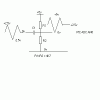vili.chaudhary
New Member
Need help
Dear all,
My first task to light LEDs using ADC when applying DC input voltage[2V].
I will appreciate all the advise.
Many thanks.
Vili
Dear all,
My first task to light LEDs using ADC when applying DC input voltage[2V].
I will appreciate all the advise.
Many thanks.
Vili
Last edited:


